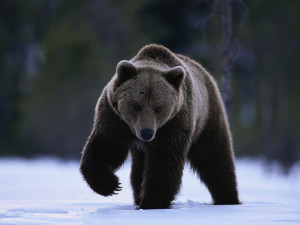The surname Quintana is listed as having a Spanish origin and meaning “dweller on a piece of land whose rent is one-fifth its produce.” In the case of Chicago White Sox starting pitcher Jose Quintana, this definition seems to be fairly accurate. After all, he starts one-fifth of his team’s games and is compensated roughly one-fifth of what a pitcher his caliber would be on the free agent market. If my math is accurate, this would make him the equivalent of an indentured servant or a government mule in the MLB pecking order. There’s no need to start a fundraiser for this mule, however, as his listed salary of $5.4 million this season is hardly chump change, but the truth is that Quintana has been undervalued and underappreciated for quite some time now. Since the beginning of the 2013 season, Quintana has produced the 6th highest WAR (16.3) among all MLB pitchers, placing him directly above established aces Madison Bumgarner, Zack Greinke, and Jon Lester over that span. He’s also in the midst of arguably his best season to date, as his 3.13 ERA, 1.13 WHIP, and 8.15 K/9 rates represent career best marks in those respective categories. With impressive numbers like these, Quintana is starting to gain more traction in fantasy circles, as his name has been popping up on a lot of top 20 starting pitcher lists around the web in recent weeks. Quintana just might be one of the top dozen or so MLB pitchers in real life, but has his fantasy value followed suit?
Let’s take a look at Quintana’s profile to see if his ascension into the fantasy elite is sustainable moving forward. Here are a few observations:
• His strikeout rate is the highest of his career. As I mentioned earlier, Quintana’s 8.15 K/9 rate is well above his career 7.39 K/9 mark. While still not among the game’s elite strikeout artists, this uptick in strikeouts has certainly added to Quintana’s fantasy value. When paired with his reasonable 2.26 BB/9 rate, the resulting 3.61 K/BB ratio puts Quintana on the leaderboard in that category among some fine company. When assessing his strikeout rate, however, it was surprising to learn that…
• His swinging strike percentage is the lowest of his career. Quintana’s current 8.1% SwStr% is the worst such rate of his five year career and represents a steep 1.1% drop from last season. That decline in swings and misses corresponds with his 82.0% Contact%, which would represent a new career high. These statistics indicate that Quintana’s spike in K-rate is a direct result of a higher percentage of called strikes rather than swinging strikes. The plate discipline numbers aren’t the only things that have changed in Quintana’s profile, as…
• He’s morphed into a flyball pitcher. This one is a bit of a head scratcher since Quintana is throwing more sinkers than ever this season (23.36%, a 6.51% increase from last season). Despite the increased sinker usage, Quintana has induced groundballs at a career low rate (40.0% GB%) while his flyball percentage has spiked to 40.3%, which represents a 10.6% increase from last season. He’s one of only 17 qualified starting pitchers with a GB/FB ratio of less than one (0.99), meaning that he’s suddenly allowing more balls in the air than on the ground. That’s a stark contrast from his 2015 GB/FB (1.58) as well as his career GB/FB mark (1.31). When factoring in the increase in flyballs allowed, it should come as no surprise that…
• He’s allowing more home runs this season. While Quintana’s 0.95 HR/9 is actually quite reasonable considering his batted ball profile and home ballpark (U.S. Cellular Field has the 5th highest park factor in MLB for home runs), he’s been allowing home runs with increasing regularity in recent weeks. In eight starts since the beginning of June, Quintana has allowed 11 home runs in 51.2 innings (1.92 HR/9). In his three home starts over that span, he’s allowed 8 homers in 21 innings (3.43 HR/9).
Bottom line: There’s no question that Quintana is an extremely good real life pitcher who has become quite the fantasy asset this season. He has good control, goes deep into games, and can get both right and left handed hitters out with regularity. However, I don’t believe that a K/9 north of 8 is sustainable for him with his current swinging strike and contact rates, and his newfound flyball tendencies will most likely result in a few more home runs allowed going forward, especially in the bandbox of U.S. Cellular Field. Expect SP3 production in the John Lackey mold rather than fantasy ace numbers over the next couple of months.
Final Verdict:



